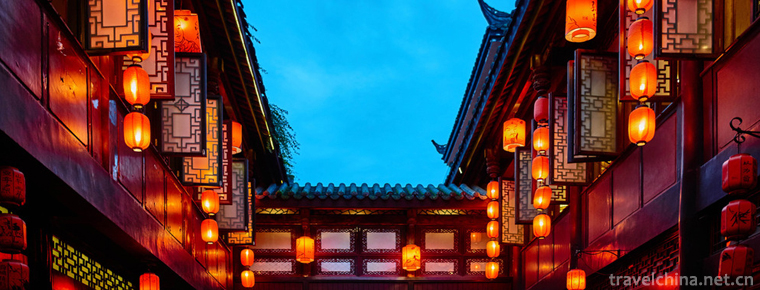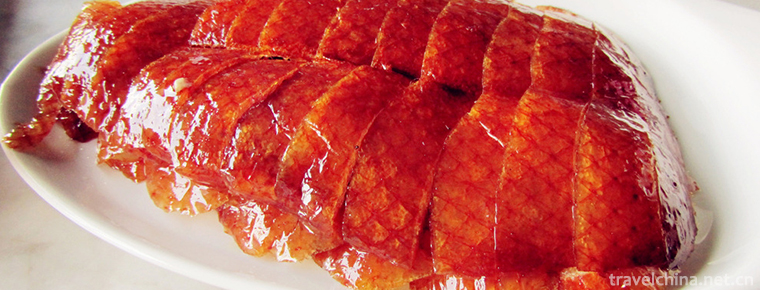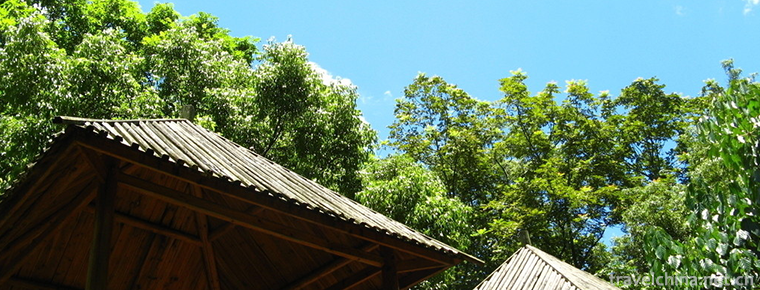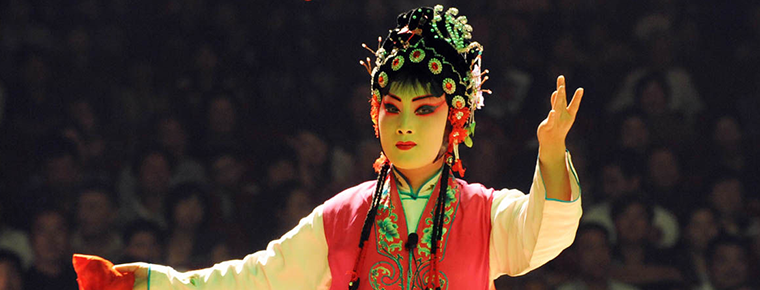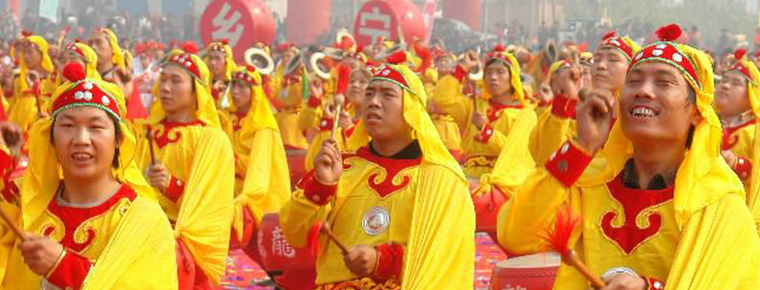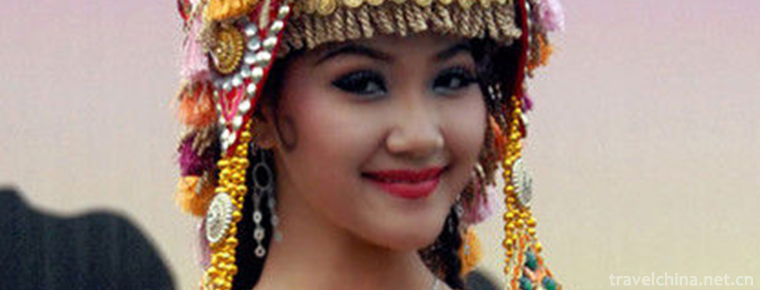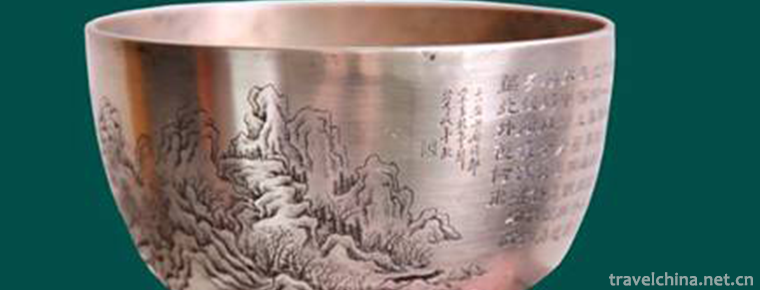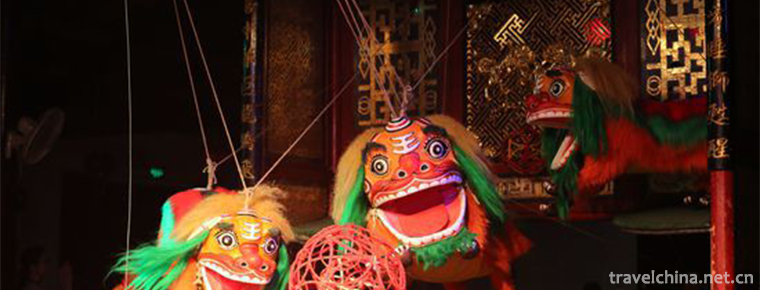Miao embroidery
Miao embroidery
Miao embroidery refers to the embroidery skills inherited by the Miao people in China. Miao embroidery in Leishan County, Guiyang City and Jianhe County of Guizhou Province has different forms and styles. Miao embroidery art is one of the unique manifestations of Miao history and culture, and the crystallization of Miao women's diligence and wisdom. Miao women are good at textile and embroidery. In Qing Dynasty, Kaihua Fuzhi, Guangnan Fuzhi, Maguan County Chronicle and Qiubei County Chronicle all recorded the phrase "Miao brocade can be weaved" by Miao women.
On May 20, 2006, Miao Embroidery was approved by the State Council and listed in the first batch of national intangible cultural heritage list.
Historical origin
One of the various accounts of the origin of the Miao people is that of the East, which is related to the divine trees and birds, and also to the ancient myths and legends of the Chinese nation. The saying of the wooden God Mang assists the Oriental Emperor Taier. Tai'er is actually an ancient clan totem of divine birds. It is also said that Tai'er is Fuxi. As the ancestors of the Chinese nation, Fuxi and Nuwa are well known. Their legendary appearance is the original form of the dragon. The legendary appearance of Tai'er is "the body and face of Bu Ya's (Fuxi), Nuwa's snake" and "the head of Fuhun dragon's body and ox" in Chunqiu Weihe Chengtu, which can be said. These ancient totem intentions are clearly reflected in Miao embroidery. For example, the embroidery that looks like Shuanglong opera beads is a person in the middle. This person is actually the ancestor of the Miao people, Jiang Yang, and Shuanglong became Fuxi and Nuwa who sheltered the Miao people.
Miao culture and the ancient history of the Chinese nation are so closely intertwined. Miao embroidery is not only enthusiastic and unrestrained, but also contains a mysterious and distant chapter. The dragon in Miao embroidery is closely linked with the pioneering process of the Chinese nation with its rich image. We can see from these embroidery works which have the original thinking characteristics of "the confusion of man and god", "the confusion of man and beast" and "the confusion of natural things", that the Dragon created by the Miao people is so naive, warm and unrestrained, magical and magnificent, free and unrestrained.
Miao embroidery refers to the folk inheritance of Miao embroidery skills, is one of the unique manifestations of Miao history and culture, is the crystallization of Miao women's diligence and wisdom. It is mainly spread in the Miao nationality gathering area in southeastern Guizhou Province. The Miao costumes in Leishan, Taijiang and other places still retain the original traditional style. The exquisite embroidery skills and brilliant silver jewelry are amazing. The embroidery technology of Miao costumes has its own characteristics, such as double needle lock embroidery, crepe embroidery, braid embroidery, broken yarn embroidery, silk floss embroidery, tin embroidery, etc. Embroidery patterns in shape and shape, a large number of use of various deformation and exaggeration techniques, the performance of Miao myths and legends of creation, thus forming the unique artistic style and embroidery features of Miao embroidery. Miao women are good at textile and embroidery. In Qing Dynasty, Kaihua Fuzhi, Guangnan Fuzhi, Maguan County Chronicle and Qiubei County Chronicle all recorded the phrase "Miao brocade can be weaved" by Miao women.
Every Miao girl can embroider. Because of the influence of the environment, Miao girls learn embroidery from their mothers, sisters and sisters-in-law at the age of four or five. By the age of seven or eight, their embroidery can be set in their own or other people's skirts.
Miao embroidery is an important part of Miao culture and a treasure of Chinese costume culture. Miao embroidery is famous for its ancient, magical and documentary characteristics.
Existing Miao embroidery originated from ancient Pu people's carved tattoos. Sculpture is to use prickles to pierce the skin and paint with cinnabar or other colors; tattoos are to imitate dragons, phoenixes and Kui patterns with prickles. The protective patterns of dragons, phoenixes and Kui appear on the human body, so as to avoid the harm of dragons and Kui and defeat dragons and Kui in order to survive. From the Miao people's Ancient Tales, we know that the ancient Miao carving tattoo masters were married GA.
When Nanman, a descendant of Pu people, invented silkworm mulberry, carved tattoos began to form beautiful decorative art from cruel self-preservation art, and "description" appeared. Description is to use cinnabar and other bionic colours to depict patterns on silk. After the emergence of bone needle, copper needle, bone weaving board and copper weaving board, the art of carving tattoo has further evolved into flower-picking and weaving. By the Zhou Dynasty, with the iron needle, the flower-picking skills of Pu people's descendants had developed to a considerable extent. Flower picking is just a vertical cross-grid of longitude and latitude lines on silk, picking out symbolic patterns of objects, which can not meet the requirements of the descendants of Pu people, Nanman, to beautify life, so they go to chisel and embroidery. By the Spring and Autumn Period and the Warring States Period, Hunan embroidery and barbaric embroidery were formed by the chiseling and embroidery skills of the descendants of Pu people. Hunan embroidery is mainly composed of Xiangliu, a descendant of Pu people living in the Xiangjiang River Basin. Its embroidery skills have developed to a realistic and realistic artistic realm. After the fall of Chu, the Hunan family quickly merged into China. After the Qin and Han dynasties, the Hunan embroidery became an important part of the embroidery skills of the Chinese nation.
Man embroidery takes Man's family of Liuman and Qirong living in Yuanjiang and Wujiang valleys as its main body. Its chiseling, embroidery and weaving skills develop to the artistic realm of fantasy, maintaining the symmetrical pattern of flower-picking, embroidery and weaving of Pu descendants, forming the style of Miao embroidery and Miao brocade.
Miao embroidery is made up of the combination of Qiu Du and Nan Man; the combination of Sanmiao and Xirong, that is, Shang Shu says, "String three seedlings in three dangers to change Xirong; release them in Chongshan to become Nan Man." Because most of the clan tribes of the Miao ethnic group live scattered and belong to different genera, each clan forms its own tattoo decoration art. In the Yuan, Ming and Qing Dynasties, there were records of Miao people being divided into red seedlings, flower seedlings, white seedlings, green seedlings and black seedlings according to their clothing characteristics. Red Miao takes Qirong and Liuman as its main body and dragon and Phoenix as its clan emblem; flower Miao takes chiseling people as its main body and butterfly as its clan emblem; white Miao and green Miao take Yi and Jiuyi as their main body and Qilin as their clan emblem; black Miao takes Panhuman as its main body and dog as its clan emblem. They all represented their clan with an animal and worshipped totems. This totem worship has greatly affected the performance of the main body of the clan embroidery decorative patterns and the formation of the style. On the other hand, with the frequent exchanges among clans, the phenomenon of mutual reference, complementation and infiltration of decorative patterns is also increasing.
Miao embroidery stitches can be divided into seven categories: embroidery, insertion, bundling, sprinkler, dot, pick and string. Large areas of flat embroidery with embroidery needles, which need to show shades of tone, will be inserted with pins, different shades of color into the formation of several color connection plane; need to show a three-dimensional sense of the place, the use of bundles of needles, so that its shape prominent on the embroidery surface. The embroidery surface needs to show the small part of the stereo sense, then use sprinkle needle, dot needle and pick needle. If the front and back of the embroidery need to show the same effect, string needles are used. A piece of embroidery is usually accomplished by a combination of several stitches or techniques such as sticking, applique, patching and stacking.
Miao embroidery's tone also has a strong exaggerated color. It often does not match the color of real objects, but uses it boldly and flexibly according to the aesthetic requirements of its clan. Its color pays attention to the contrast between cold and warm, and pays attention to the harmony of color beauty in the strong contrast, resulting in a simple and colorful effect. Miao embroidery has a long history, and its decorative patterns are exaggerated and deformed, which not only focus on the performance of vibrant objective objects, but also dream-like fantasy color. The needle method is rich and changeable, and the tone is simple, coordinated and bright. All these make Miao embroidery form a unique artistic style. It is this strong individuality which is different from other brotherly nations that makes Miao embroidery a wonderful flower in our country's decorative art garden and adds elegance to this garden.
Inheritance significance
With the constant change of people's aesthetic concept and interest, the market of national costumes is becoming smaller and smaller, and among the young Miao people, fewer and fewer people wear their own national costumes. In this situation, the number of Miao embroidery artists is decreasing day by day. It can be said that the more modern culture is developed, the faster the loss of traditional skills of Miao embroidery is. Facing the crisis of Miao embroidery, measures should be taken as soon as possible to ensure the smooth inheritance of this ancient national craft.
The state attaches great importance to the protection of intangible cultural heritage. On May 20, 2006, the intangible cultural heritage was approved by the State Council and listed in the first batch of national intangible cultural heritage list. Its exquisite embroidery skills and brilliant silver jewelry are admirable, and have been recognized as the most exquisite embroidery works of art by the world. This kind of national cultural heritage only relies on folk heritage. Obviously, it is only in a natural state of self-survival and self-destruction, which is in danger of losing. Media reports say that in a hundred years'time, the Chinese will study the dress culture of the Miao people, perhaps by visiting museums in France.
Only when Miao embroidery is made into an industry can it be well-known and thus stimulate the local economy. On the basis of attracting people's attention, it's good to get income again. The problem is that only a few local people produce Miao embroidery in a family workshop. Under the full manual operation, the production is extremely limited, and the sales channels are extremely forceful. The sales volume of Miao embroidery is extremely limited by the local tourist shops and online sales. According to the market survey of the people in the relevant industries, the value of Miao embroidery can reach an extremely high price among the people who know the goods, especially the foreign guests are willing to buy collections. This situation only shows that we have not established an effective channel of production and marketing, and it is worrying that if the foreigners learn the skills of Miao clothing and Miao embroidery and produce them in large quantities in factories. It will bring tremendous impact to the pure handmade Miao costume making.
Commercial utilization
The commercial utilization of this cultural heritage should pay attention to several aspects. Firstly, we should apply for patent protection as soon as possible to protect Miao embroidery's special skills and decorations so as to ensure that its intellectual property rights and national art resources are not infringed; secondly, we should train more Miao embroidery artists to discuss the possibility of improving their craft production speed on the basis of maintaining their full-handicraft production tradition, so as to produce more quantity and more styles; thirdly, in the promotion of embroidery, we should pay more attention to the promotion of Miao embroidery products. Widely endow it with local ethnic cultural elements to make its mysterious aesthetic ideas and interests more known; fourthly, establish more sales channels, including network sales. In this regard, the vision of Miao compatriots and their related handicraft workshops is limited. In this regard, local governments should do something. As such, we should not often be in the embarrassment of "holding a golden bowl to beg for food". Environment.

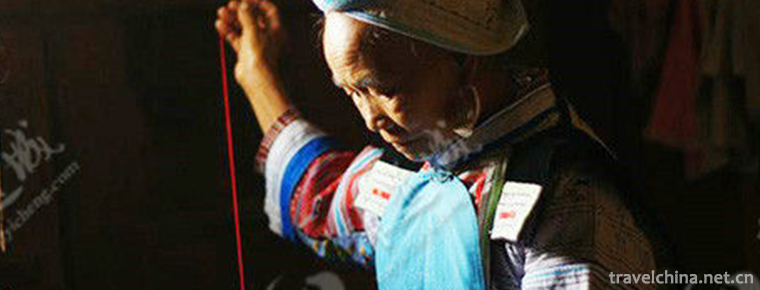
-
Jinli Street
Address:No. 231, Wuhou Temple street, Chengdu, Sichuan,China.
Views: 132 Time 2018-09-29 -
Ancient town of Shaxi
Shaxi is located in the southeast of Jianchuan in Dali, Yunnan Province, China.
Views: 216 Time 2018-10-17 -
Cantonese crispy fried pork
Crispy fried pork is a traditional dish with color, aroma and taste. It belongs to Guangdong cuisine department. This dish is one of the classic Cantonese cured wax.
Views: 200 Time 2018-11-02 -
Liangfengjiang National Forest Park
Liangfengjiang Forest Park is the earliest national forest park in Guangxi approved by the Ministry of Forestry, covering an area of more than 70,000 mu. Located in the southern.
Views: 174 Time 2019-01-30 -
Two clip string
Two chords, also known as the "big five tones" by the masses. One of the traditional Chinese operas. It is mainly popular in Western Shandong, Eastern and Northern Henan, .
Views: 126 Time 2019-04-28 -
Guilin fishing drum
Guilin fishing drum, commonly known as sentiment, is the local traditional rap and singing art of Guilin. The Song Dynasty was introduced into Guilin from the north, .
Views: 145 Time 2019-05-02 -
Auspicious gongs and drums in southern Shanxi
Weifeng gongs and drums in southern Shanxi are folk traditional percussion music which was born and popular in Linfen area of Shanxi Province. The first batch of them were selected into.
Views: 132 Time 2019-05-07 -
Kirgiz costumes
"Kirgiz" means the people who live on the cliffs. Another saying is that "Kirgiz" are forty girls. This statement is wrong. Most of the Kirgiz people live in Xinjiang's Kizilesu Au.
Views: 263 Time 2019-05-09 -
Cutting Copper Dus Cutting Copper
Painting inscriptions on bronze pots, smooth lines; beautiful paintings of mountains and rivers on bronze plates, such as immersion... In many people's eyes, Du's bronze engraving, .
Views: 257 Time 2019-05-09 -
Ningde Huo Boy Line Lion
Ningde Huo children's lion is a traditional folk culture, which controls the lion's movement and expression through silk thread. Line lion is mainly pulled by head rope, tail rope and parotid rope, so.
Views: 73 Time 2019-06-08 -
Hydrological survey of Mianyang
Affected by the landform, Mianyang has abundant precipitation, large runoff, vertical and horizontal rivers and developed water system. There are more than 3000 rivers and gullies in the city. All rivers and gullies flow into Fujiang, Bailongjiang and Xihe.
Views: 335 Time 2020-12-14 -
History and culture of Mianyang
Located 47 kilometers south of Santai County, Qijiang ancient town was once the capital of Qi state during the spring and Autumn period and the Warring States period. Every year on the 27 to 28 May of the lunar calendar, all the male and female believers around.
Views: 222 Time 2020-12-14
